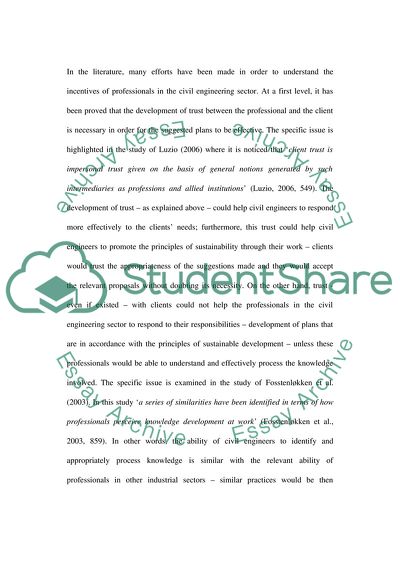Cite this document
(How Can Engineers Resolve Conflicts Between Their Obligation and the C Assignment, n.d.)
How Can Engineers Resolve Conflicts Between Their Obligation and the C Assignment. Retrieved from https://studentshare.org/engineering-and-construction/1719626-how-can-engineers-resolve-conflicts-between-their-obligation-to-meet-clients-needs-and-their-obligation-to-sustainable-development
How Can Engineers Resolve Conflicts Between Their Obligation and the C Assignment. Retrieved from https://studentshare.org/engineering-and-construction/1719626-how-can-engineers-resolve-conflicts-between-their-obligation-to-meet-clients-needs-and-their-obligation-to-sustainable-development
(How Can Engineers Resolve Conflicts Between Their Obligation and the C Assignment)
How Can Engineers Resolve Conflicts Between Their Obligation and the C Assignment. https://studentshare.org/engineering-and-construction/1719626-how-can-engineers-resolve-conflicts-between-their-obligation-to-meet-clients-needs-and-their-obligation-to-sustainable-development.
How Can Engineers Resolve Conflicts Between Their Obligation and the C Assignment. https://studentshare.org/engineering-and-construction/1719626-how-can-engineers-resolve-conflicts-between-their-obligation-to-meet-clients-needs-and-their-obligation-to-sustainable-development.
“How Can Engineers Resolve Conflicts Between Their Obligation and the C Assignment”. https://studentshare.org/engineering-and-construction/1719626-how-can-engineers-resolve-conflicts-between-their-obligation-to-meet-clients-needs-and-their-obligation-to-sustainable-development.


